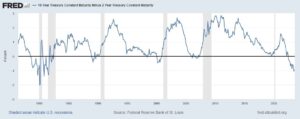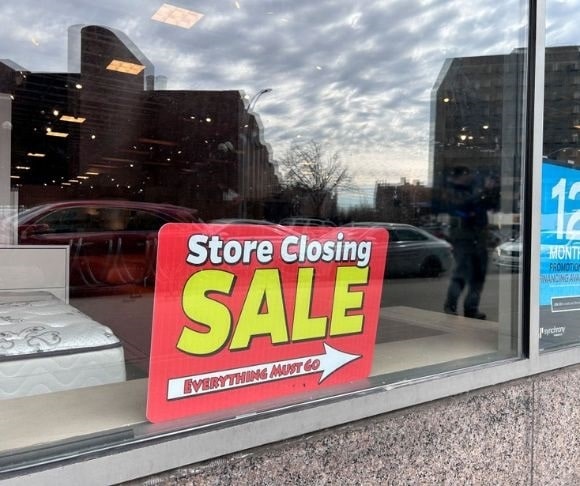On July 18, CNN published in-depth economic analysis that might have been written by a high school drama student trying to pass his Econ 101 class. “A recession could be miles away – or it could be just around the corner,” the network speculated. Indeed, since the US economy came out of a brief technical recession in the first half of 2022, economists and market analysts have been penciling in a full-blown recession. Their expectations made sense, as all the primary downturn indicators have repeatedly flashed red – and still are today. So, what’s the deal with the recession, anyway? Let’s take a gander at those signals.
Recession Indicator: LEI
The Conference Board Leading Economic Index (LEI) contracted for the 15th consecutive month in June, falling at a worse-than-expected pace of 0.7% to 106.1. This represented the lowest reading since July 2020, fueled by higher initial jobless claims, weaker new orders, bearish consumer expectations, and a drop in housing construction. “We forecast that the US economy is likely to be in recession from Q3 2023 to Q1 2024. Elevated prices, tighter monetary policy, harder-to-get credit, and reduced government spending are poised to dampen economic growth further,” explained Justyna Zabinska-LaMonica, the CB senior manager of business cycle indicators. The CB’s LEI has served as a dependable tool for economists, as it has forecast eight consecutive US recessions.
Recession Indicator: Yield Curve Inversion
Is it time to accept the yield curve inversion? Over the last year, experts have debated the merits of this metric, but it is hard to dispute its accuracy; it has predicted all but one recession since the Second World War. For the last 12 months, the spread between the widely monitored two- and ten-year Treasury yields has been stuck in negative territory, hovering around a negative 100 basis points since March. The Federal Reserve’s preferred recession signal – the three-month and ten-year spread – has been frozen in subzero terrain, collapsing to as low as negative 180 basis points in May. Financial markets pay attention to this because it highlights higher interest rates in the short term and rate cuts in the long term in response to slowing economic growth. Typically, every time the spreads turned negative, a recession followed a few months later.
 Recession Indicator: Money Supply
Recession Indicator: Money Supply
During the coronavirus pandemic, the Fed’s printing press operated around clock, with the apparatus creating more than one-third of all US dollars ever produced in the nation’s history in about 18 months. However, since peaking in February 2021, it has been on a downward trend, eventually contracting in December 2022 for the first time since the Federal Reserve recorded this measurement. The latest Eccles Building data show that the money supply contracted 3.97% in May, which was surprisingly up from negative 4.62% in April. Still, it has been a dependable tool for projecting a recession, predicting seven out of the last nine downturns.
Recession Indicator: GDI
When the US economy suffered back-to-back negative GDP growth rates in the first two quarters of 2022, the current administration dismissed the numbers, suggesting that it is impossible for the country to be in a recession due to the strong labor market. Treasury Secretary Janet Yellen went as far as choosing to utilize gross domestic output (GDO) – an average combining the GDP and gross domestic income (GDI) – to prove there was no recession. Well, what a difference a year can make. As Liberty Nation recently reported, the real GDO has tumbled for four of the last five quarters. “In the fourth quarter of 2022, the GDO was -0.35% (+2.6% GDP and -3.3% GDI). In the first quarter of 2023, the GDO was -0.5% (+1.1% GDP and -2.3% GDI).” While this is not a conventional signal, we are going by what the White House says.
Got Recession?
Despite the president’s Bidenomics marketing campaign, his economic doctrine is hardly gaining traction among US voters. The recent CNBC All-America Economic Survey found that approval for Biden’s handling of the economy stands at an abysmal 37%. This is not surprising, considering that a recent YouGov-Economist poll revealed 47% of the country thinks the nation is already in a recession. But while the US has yet to meet the official criteria of a downturn, it is hard to fault anyone for thinking the US is in bearish times. Real (inflation-adjusted) wages have only recently turned positive, supermarket prices are through the roof, shelter costs are still sky-high, and a buck buys a nickel’s worth. All the chief alerts are flashing red, so perhaps it is only a matter of time before a recession strikes. As CNN reported, it could happen soon, or it could happen in the distant future!




